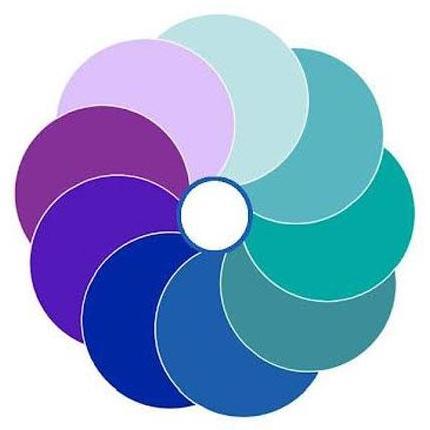About Juvenile Justice
Juvenile Justice is a system of laws, policies, and procedures intended to regulate the processing and treatment of nonadult offenders for violations of law and to provide legal remedies that protect their interests in situations of conflict or neglect. Punishable offenses that are classified as criminal offenses for adults (e.g., murder, robbery, and larceny) are referred to as delinquency when committed by juveniles, whereas juvenile offenses mandating legal intervention only (e.g., alcohol and tobacco use, truancy, and running away from home) are referred to as status offenses.
Youth under the age of 18 who are accused of committing a delinquent or criminal act are typically processed through a juvenile justice system. While similar to that of the adult criminal justice system in many ways—processes include arrest, detainment, petitions, hearings, adjudications, dispositions, placement, probation, and reentry—the juvenile justice process operates according to the premise that youth are fundamentally different from adults, both in terms of level of responsibility and potential for rehabilitation.
The primary goals of the juvenile justice system, in addition to maintaining public safety, are skill development, habilitation, rehabilitation, addressing treatment needs, and successful reintegration of youth into the community. The juvenile justice system takes a significantly more restorative approach than the adult criminal justice system. A truly successful case for youth would result in the adolescent learning from the experience without exposure to the severity of an adult prison, altering their decisions and life course moving forward, and having no future contact with the juvenile or criminal justice systems.
Often, youth who are involved with or at risk of being involved with the juvenile justice system have co-occurring life difficulties or disabilities that lead them to cross paths with the justice system at a particular moment and/or that have significant impacts on their emotional, mental, physical, and behavioral well-being. The notion that children and youth are not innately violent or cruel is the driving force behind the juvenile justice system. There exists a firm belief that youth can and will lead healthy and constructive lives if given the opportunity to grow instead of being presumed irredeemable and segregated from their communities. youth.gov
Declining numbers
- Between 2000 (the peak year) and 2020, the number of youth held in juvenile justice facilities on a typical day fell from 108,800 to 25,000, a 77% decline. (Covid may have played a role in recent years.)
- Though overall rates have been steadily declining over the past years, approximately 423,077 delinquency cases are adjudicated and disposed in juvenile courts annually. Fifty-two percent (220,000) of those disposed cases were adjudicated delinquent in 2018. youth.gov
In 2019, roughly 40% of youth in the one-day count were in detention and 60% were in commitment. These counts do not include people under 18 held in adult prisons and jails. Youth Justice by the Numbers – The Sentencing Project
Types of juvenile offenses and probation
DCS: Tennessee law says that, after a youth has been found to be delinquent (in adult court terms - they were found guilty), the juvenile court can place a youth “under the supervision of the probation officer of the Department of Children's Services (DCS).” Probation services are provided as preventive measures to divert youth who have broken the law from entering state custody. TN Department of Children's Services
A status offense is only against the law because of the age of the offender. For example, running away from home, possession of cigarettes and truancy are status offenses. Many youth are placed on probation due to a status offense. If they violate the conditions of their probation (e.g. attending school, drug screens, curfew, etc.) they can be placed in the custody of DCS.
A delinquent offense is an action that is a crime for all people. The delinquent offense can be a misdemeanor or a felony.
- A misdemeanor is an offense, which if committed by an adult, is punishable by a fine or a sentence not to exceed 11 months and 29 days. (Stealing property under the value of $500, evading arrest, using a false ID, minor vandalism, etc.) In general, these crimes are not violent, but can include simple assault – such as a fight at school, or domestic fight with a family member.
- A felony can be punishable by more than a year incarceration if committed by an adult. These crimes can be against a person or against property – such as possession of illegal drugs for resale, carjacking, armed robbery, aggravated assault, murder or attempted murder, rape, etc.
TCCY: The Tennessee Commission on Children and Youth is the state advisory group responsible for implementing the provisions of the Juvenile Justice and Delinquency Prevention (JJDP) Act in TN.
The four core requirements of the act are to
- Deinstitutionalize status offenders;
- Remove children from adult jails;
- Separate children from adult offenders; and
- Reduce racial and ethnic disparities (R/ED) within the youth justice system.
Intersectionality with Brain Injury
As many as 40 - 50% of those in the Juvenile Justice System have a history of Traumatic Brain Injury. They are likely to sustain more injuries as they age. Young adults (18-28) with a history of TBI are 2.5 times more likely to be incarcerated than those without a TBI. With a TBI, they have a 69% higher rate of recidivism. Half of youth offenders have a history of loss of consciousness, with repeat injuries being very common (Davies et al., 2012; Kaba et al., 2013). Justice involved youth with a history of TBI have a significantly increased history of Substance Use, Mental Illness, attempted suicide, childhood trauma and school suspension versus the general population. Problems worsen with each injury: depression, anxiety, hallucinations, cognitive challenges, violent thoughts, suicidal ideation and suicide attempts. Expert recommendations are to screen youth in the Juvenile Justice System for a lifetime history of brain injury, screen for cognitive impairment, train justice personnel about brain injuries and how to accommodate for changes, educate the youth about their brain injury, and referral to community-based resources for support.
Screening Tools
NASHIA's OBISSS (Online Brain Injury Screening and Support System)
Juvenile Justice- The Child & Adolescent Needs & Strengths (CANS)
Massachusetts Youth Screening Instrument – Second Version (MAYSI-2) | NYSAP
Youth Screen Assessment (tn.gov)
Using Screening And Assessment Tools To Inform Key Decisions – Enhanced Juvenile Justice Guidelines
Crisis Intervention Tools
National Websites
A Guide to Resources to Address TBI within Juvenile Justice Systems in the United States - NASHIA
Disability Rights North Carolina TBI Justice Database
CJJ | The Coalition for Juvenile Justice (juvjustice.org)
Youth Justice — Children's Defense Fund (childrensdefense.org)
Youth Justice in America - Take Action Today (sentencingproject.org)
Youth Justice by the Numbers – The Sentencing Project
Children in Adult Prison (eji.org)
Infographics
State_of_the_Child_2022.pdf (tn.gov)
School to prison pipeline infographic.png (1131×731) (mstservices.com)
End School to Prison momsrising.org
Girls in the Juvenile Justice System (mstservices.com)
Juvenile Recidivism Infographic (mstservices.com)
Teen Drug Use Infographic (mstservices.com)
How many juveniles confined in US (mstservices.com)
Mental Health Disorders in Juvenile Facilities (mstservices.com)
Juveniles Tried as Adults (mstservices.com)
Juvenile Detention - The Aftermath (mstservices.com)
LGBTQ+ Youth Juvenile Justice and Child Welfare Infographic (mstservices.com)
Juvenile Arrest Trends Infographic (mstservices.com)
Mental Illness and Substance Use in Youth: The Impacts We Need to Know (mstservices.com)
TN Brighter Futures groups that are a part of this System of Care:
- Administrative Office of the Courts
- Department of Children’s Services
- Tennessee Commission on Children and Youth
Downloadable Files:
Juvenile Justice Resource Page PDF
Juvenile Justice Resource Page Text Document
Meeting/Training PowerPoint PDF, Linda Copas, MS, Youth Justice Director and Tennessee Commission on Children and Youth
Topic discussion presented by Linda Copeland and Brain Links.







